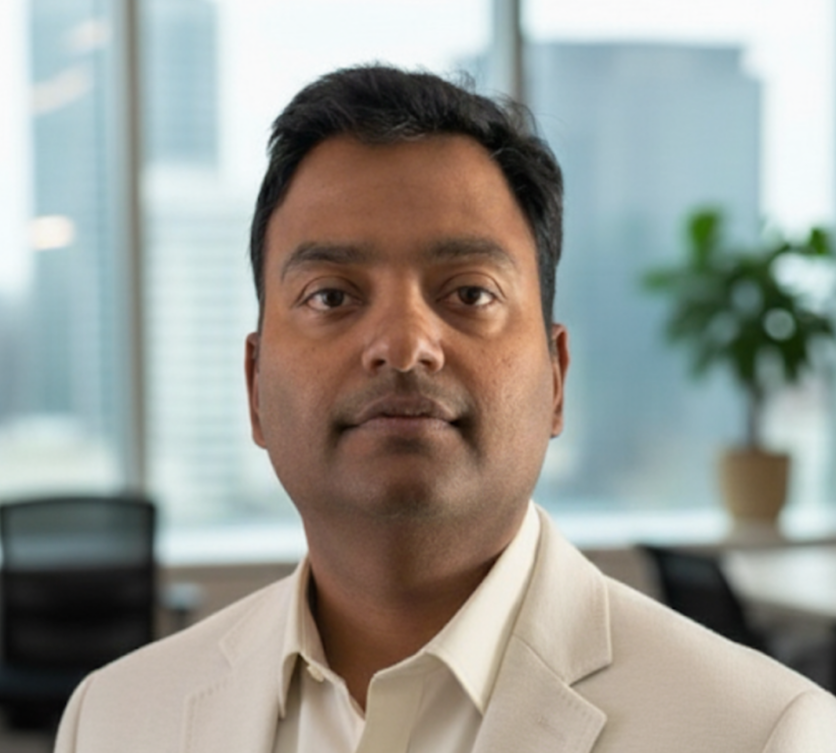
"Every quantum leap in infrastructure intelligence starts with the realization that tomorrow's systems must anticipate needs in real time, not merely react to problems after the fact." — Balaji Salem Balasundram
The Age of Intelligent Infrastructure
It was not long ago that the idea of infrastructure was tied to concrete and steel—roads, bridges, and power grids that shaped cities and economies. Today, however, the conversation is led by visionary technologists like Balaji Salem Balasundram, whose decades-long journey through cloud architecture and artificial intelligence has shifted the very meaning of infrastructure toward thinking, adaptive systems. As the global economy stands at the brink of a $2.8 trillion smart infrastructure market by 2034, with AI forming the backbone for efficiency and resilience, the stakes could hardly be higher.
Balaji, a Senior Technical Account Manager known for his contributions in cloud transformation, underscores the magnitude of this shift. "We are living in an era where infrastructure is not just physical, but deeply digital. Our ability to use machine intelligence to optimize performance, anticipate outages, and secure data flows will determine how future cities, companies, and citizens thrive," he stated during a recent panel on digital transformation.
Innovation at Scale: The Pioneering Work
Balaji's influence stretches across continents and industries, but his most impactful achievements all center on one theme: delivering intelligent infrastructure at scale. Over the past decade, he has spearheaded AI-driven automation frameworks that have significantly reduced operational costs and improved system uptime to near-perfect levels, saving over 8,000 hours annually for enterprise clients while enhancing data accuracy by up to 90%.
He pioneered the adoption of Generative AI solutions, utilizing models such as Claude Sonnet, and set new standards in enterprise cloud management. These initiatives, now emulated by global organizations, are credited with streamlining technical support, powering predictive analytics, and even facilitating seamless migrations for mission-critical systems.
"True transformation occurs when businesses can rely on their digital infrastructure as confidently as they do water and electricity. Automation and AI are the pillars of this trust," Balaji observed, drawing tangible links between technological foresight and measurable business outcomes.
The Market's Meteoric Rise and 2030 Forecasts
Within the past year, smart infrastructure investment has scaled astonishing heights. The global market spiked to $449.71 billion in 2024, with projections cresting over $2.7 trillion by 2034 at a CAGR approaching 20%. In parallel, the AI infrastructure sector is projected to surge from $47.23 billion in 2024 to a predicted $499.33 billion by 2034, outpacing most technology segments in growth.
The bulk of these gains stems from North America, with the U.S. market alone expected to expand sixfold over the next decade, enmeshing AI and cloud-driven solutions in urban planning, energy management, and large-scale data centers. Meanwhile, the Asia Pacific is rapidly closing the gap as government-led investments in digital infrastructure and national AI projects catalyze innovation.
Applied Intelligence: From Cloud to Critical Data
Balaji's methodology hinges on integrating predictive analytics with cloud architecture. His frameworks go beyond simple automation, leveraging machine learning and multitenant database strategies—techniques that have transformed disaster recovery and high-availability operations for vast enterprises.
"Our approach marries adaptive AI with real-time data streams," he explained. "This enables technical teams to anticipate risks, allocate resources more efficiently, and recover from outages at unprecedented speed."
Notably, his technical blog, referenced widely by practitioners, addresses the challenge of managing users and privileges in custom cloud databases with enhanced multitenancy. This research has made a tangible impact, empowering database engineers worldwide to secure and scale operations.
Recognition and Thought Leadership
Beyond implementation, Balaji shares his expertise at international forums, including Oracle OpenWorld, where he mentors peers and sets new standards through technical publications. His career, marked by over 15 Oracle certifications, 12 AWS certifications, and a relentless drive for innovation, has become a touchstone for professionals navigating the rapid evolution of cloud and AI technologies.
In recognition of his achievement, Balaji is set to be awarded the AWS Golden Jacket—an honor bestowed upon only a handful of professionals globally who have completed all AWS certifications, a distinction held by fewer than one in a million practitioners worldwide. This milestone not only symbolizes his deep technical acumen but also his relentless pursuit of innovation and learning leadership in the cloud ecosystem.
Balaji recalls, "Each milestone—whether it's improving uptime for a financial multinational or tuning a generative model for customer support—reinforces the fact that expertise and mentorship ripple outward, shaping industry best practices."
A Critical Viewpoint: The Challenges Ahead
Yet, not every observer shares this unbridled optimism. Dr. Elaine Miller, a data infrastructure analyst, warns, "The reliance on opaque AI models for vital infrastructure introduces troubling risks. Without explainable AI and adequate human oversight, complexity can become a liability rather than an asset. Some industries have seen early setbacks, where automation led to costly troubleshooting delays and confusion during critical incidents."
Balaji does not shy away from these concerns. "Every industry grapples with the tension between innovation and oversight," he admitted. "Our responsibility is to build systems that are not only intelligent but also transparent, secure, and inclusive. That's where the next wave of progress will emerge—at the intersection of agility and governance."
This commitment is reflected in his advocacy for explainable AI, collaborative solution roadmaps, and continuous improvement cycles. Moreover, his frameworks incorporate real-time analytics and proactive risk management, helping organizations navigate rapid change and uncertainty.
Market Drivers and Industry Opportunity
The interplay between market forces and technological evolution is unmistakable. Governments, startups, and technology giants alike are investing billions in various infrastructure advances—from smart transportation projects in Chicago to national AI strategies in India and South Korea. The urgency to support urbanization, energy efficiency, and sustainability has created a fertile ground for smart systems driven by cloud, IoT, and AI analytics.
Balaji believes that the most critical breakthroughs will come not from isolated product launches, but from integrated, adaptive solutions that address both operational and environmental challenges.
"Smart infrastructure must serve everyone—optimizing traffic, streamlining healthcare, securing utilities. The opportunity lies in breaking silos and designing systems for universal benefit," he affirmed.
Methodologies and Practices Shaping the Industry
Central to this vision are the unique methodologies that Balaji has championed, notably predictive model tuning and adaptive automation. Unlike conventional, reactive systems, his frameworks use machine intelligence to predict and mitigate threats before they disrupt operations. Enterprises now routinely adopt these proactive strategies, citing measurable improvements in business continuity, agility, and cost efficiency.
Moreover, knowledge sharing, through publications, mentoring, and professional forums, underpins his mission to democratize technical advancement. Practices once considered state-of-the-art are now baseline requirements, thanks in part to the ripple effect of his thought leadership.
The Road Ahead: Outlook to 2030
What does the future hold? If market forecasts hold true, infrastructure intelligence will underpin urban planning, government services, and nearly every facet of enterprise IT. The application of cloud-based AI will enable organizations to adapt rapidly, collaborate globally, and protect vital information with ever-greater sophistication.
Still, real progress demands vigilance. Balaji concludes: "Our job as technology leaders is never finished. Each advancement solves today's problems—but tomorrow's challenges await. By building systems that learn, adapt, and empower people, we set the benchmark for reliability, agility, and trust in an unpredictable world."
A New Standard for Infrastructure
In the words of Balaji: "Setting a new global benchmark starts with relentless curiosity and an unwavering commitment to excellence. As digital and physical realities converge, it's our responsibility to ensure every innovation serves a smarter, safer, and more inclusive digital future."
ⓒ 2025 TECHTIMES.com All rights reserved. Do not reproduce without permission.




